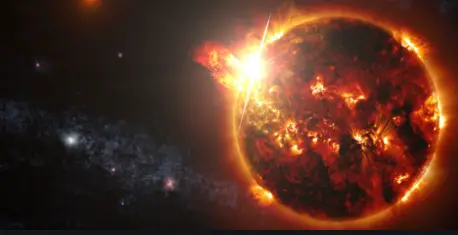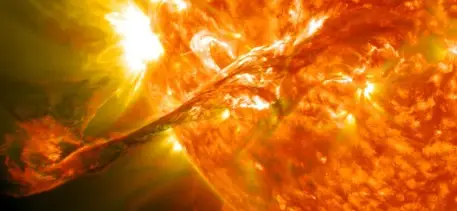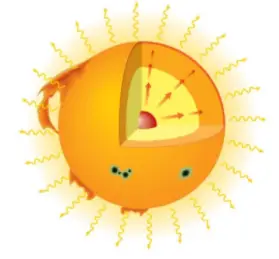
There are tons of information on how does the sun produce energy online and in books. This article is about simplifying the concept in a much easier way for people of ages to learn and understand without a digging into complicated physics.
Hydrogen Atoms To Helium

The core of the Sun produces the energy where hydrogen atoms (H) converts into molecules of helium (He) due to the extreme pressure and temperature that exists within the core (Up to 25.33 trillion KPa and 15.7 million kelvin.
Hydrogen atoms are compressed and fuse together, creating helium. This process is called nuclear fusion
It takes four hydrogen atoms to fuse into each helium atom

The fusion of four protons (hydrogen molecules) into one alpha particle is the final net result:
2 protons and 2 neutrons bound together into a particle that is identical to a helium nucleus.
Brief Solar Core Facts
The solar core produces heat through fusion, and 99% of the energy produced by the Sun takes place within 24% of the Sun’s radius.

By 30% of the radius, fusion has stopped almost entirely. So the rest of the energy transfers from the core through successive layers of the sun, to the solar photosphere and projects into space as particle kinetic energy.
The Sun releases energy at a mass–energy conversion rate of 4.26 million metric tons per second, which produces the equivalent of 38,460 septillion watts (3.846×1026 W) per second.
